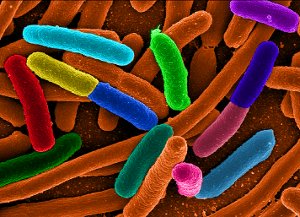Types of Electron Microscope

Electron microscope is used to study and observe cells, molecules, micro-organisms, crystals, metals and a number of other organic and inorganic specimens. Most modern electron microscopes can magnify the specimen up to 2 million times. The quality of the image, resolution, etc., however, depend greatly on the type of the electron microscope used.
Electron microscope can be divided into five types:
Transmission electron microscope (TEM)
It is the earliest form of electron microscope. It works on the same principles as the traditional light microscopes with the difference that it uses a beam of electrons under high voltage instead of light. The electrons which are transmitted (therefore transmission electron microscope) through the sample create a magnified image on an imaging device which can be a fluorescent screen, photographic film or a CCD camera. The TEM produces black and white two-dimensional image of the specimen, however, it is also possible to get a three-dimensional representation of the material by the use of the so-called ptychography that was invented by Walter Hoppe and Fourier-based back projection.
Scanning electron microscope (SEM)
The scanning electron microscope (SEM) uses high voltage electron beam as well but in contrary to the TEM, the SEM focuses the beam of electrons on a narrow spot and creates image by scanning the specimen in a raster (therefore scanned electron microscope). Although the first prototype of the SEM was developed as early as 1937, this electron microscope became useful only after it was improved by Sir Charles Oatley in the 1960s. Its main advantage over the TEM is the ability to image specimens which are wet or in a low vacuum, while the fact that it relies on the surface scanning rather than transmission of electron beam through the sample, has made imagining of organic samples a lot easier. The type of SEM which is used for imaging wet and low vacuum specimens is known as environmental scanning electron microscope (ESEM). Both the standard SEM and ESEM produce a high quality three-dimensional image of the specimen.
Reflection electron microscope (REM)
This type of electron microscope uses scattered electrons that reflect from the surface of the specimen to produce an image. It works similar to the SEM but instead of using the secondary electrons, the REM uses elastically scattered electrons to create an image. It involves the used of a technique known as the reflection high-energy electron diffraction (RHEED) or reflection high-energy loss spectroscopy (RHELS).
Scanning transmission electron microscope (STEM)
Widely considered a high resolution version of the SEM, the scanning transmission electron microscope (STEM) focuses on a narrow spot and produces image by scanning the sample in a raster. However, it also “picks up” the electrons which go through the specimen and produces a resolution comparable to the TEM by using the SEM technique.
Low-voltage electron microscope (LVEM)
The low-voltage electron microscope (LVEM) is a unique blend of the TEM, SEM and STEM. Like its name suggests, it uses low-voltage which makes it especially useful for imaging of biological and organic specimens.